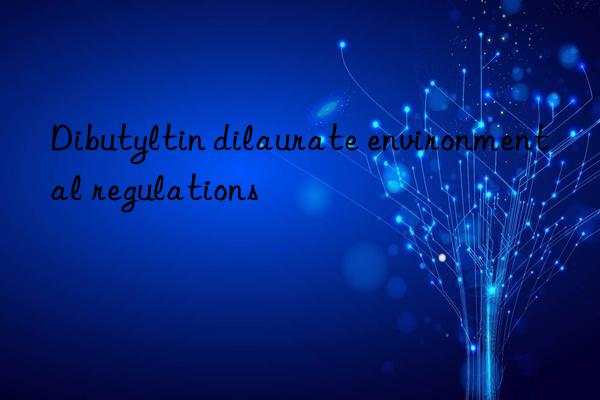
Dibutyltin dilaurate (DBTDL), as an organotin compound, is widely used in many industrial fields due to its efficient catalytic properties, especially in polyurethane (PU) foam manufacturing, polyvinyl chloride (PVC) ) heat stabilizer and in organic synthesis. However, the use of dibutyltin dilaurate is not without controversy, and its potential effects on the environment and human health have raised global concerns. Therefore, many countries and regions have enacted a series of environmental regulations aimed at limiting or prohibiting the use of this compound to protect the ecological environment and public health.
EU REACH Regulation
The EU’s Registration, Evaluation, Authorization and Restriction of Chemicals (REACH) regulations are one of the world’s comprehensive chemicals management frameworks. REACH requires manufacturers and importers to register the chemicals they produce and provide detailed chemical safety assessments. For dibutyltin dilaurate, REACH classifies it as a substance of very high concern (SVHC) and imposes strict restrictions on its use. In some applications, such as direct food contact items or children’s toys, the use of dibutyltin dilaurate has been completely banned. In addition, the EU also requires products containing dibutyltin dilaurate to be authorized and only allowed to be used when there are no viable alternatives.
U.S. Environmental Protection Agency (EPA) Regulations
The U.S. Environmental Protection Agency (EPA) also regulates the use of dibutyltin dilaurate. Under the Toxic Substances Control Act (TSCA), the EPA has the authority to evaluate and restrict the use of chemicals to protect the public from potential health risks. The EPA has conducted risk assessments of organotin compounds, including dibutyltin dilaurate, and has taken steps to limit their use in certain products, particularly those that may pose a risk of exposure to children and sensitive populations.
Other country regulations
In addition to the European Union and the United States, other countries and regions have also introduced their own regulations to control the use of dibutyltin dilaurate. For example, Canada includes it in the list of hazardous substances under the Canadian Environmental Protection Act (CEPA); Japan regulates it through the Chemical Substances Evaluation and Manufacturing Restriction Act (CMR); Australia passes the Industrial Chemicals Act ( IC Act) restricts its use.
International Convention
At the international level, the Stockholm Convention is concerned about persistent organic pollutants (POPs). Although dibutyltin dilaurate is not currently included in the POPs list, its similar organotin compounds, such as tributyltin, have been restricted by the convention. This shows that the international community is gradually recognizing the long-term impact of organotin compounds on the environment, and may adopt stricter control measures on the use of dibutyltin dilaurate in the future.
Industry self-regulation
In addition to government-level regulations, many industry organizations and companies have also begun to proactively reduce or eliminate the use of dibutyltin dilaurate and instead look for more environmentally friendly and safer alternatives. This trend of self-regulation not only responds to regulatory requirements, but also reflects corporate social responsibility, helping to enhance brand image and market competitiveness.
Conclusion
Regulations around the world are increasingly restricting the use of dibutyltin dilaurate due to the risks it poses to the environment and human health. These regulations not only reflect the importance of public health and environmental protection, but also promote the development of the chemical industry in a greener and more sustainable direction. Enterprises should pay close attention to changes in relevant regulations, adjust production strategies in a timely manner to ensure compliance with new environmental standards, and at the same time actively develop and adopt more environmentally friendly chemicals to meet future challenges.
Further reading:
bismuth neodecanoate/CAS 251-964-6 – Amine Catalysts (newtopchem.com)
stannous neodecanoate catalysts – Amine Catalysts (newtopchem.com)
polyurethane tertiary amine catalyst/Dabco 2039 catalyst – Amine Catalysts (newtopchem.com)
N-Methylmorpholine – morpholine



 微信扫一扫打赏
微信扫一扫打赏
